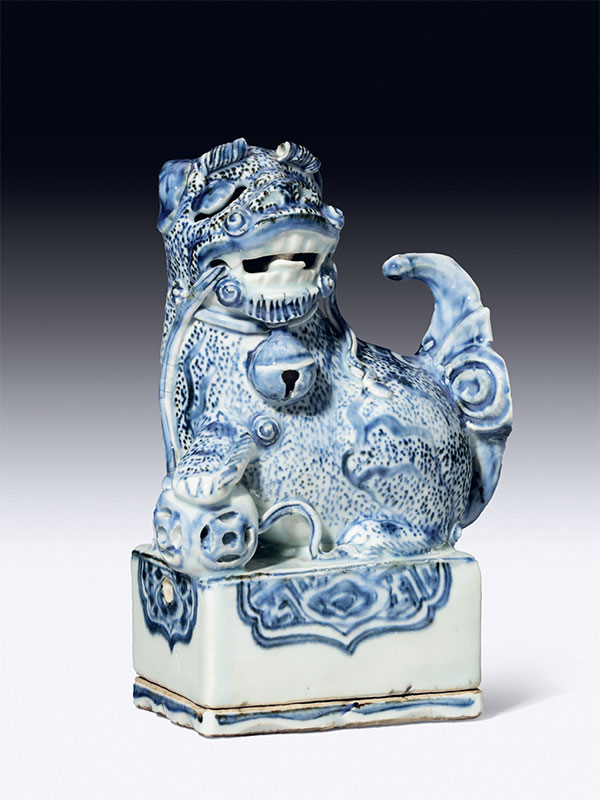Ko-sometsuke porcelain incense burner and cover
China, Ming dynasty, Tianqi period, 1621-1627
A ko-sometsuke porcelain incense burner, the cover in the form of a Buddhist lion seated on a rectangular pedestal with one paw resting on a pierced brocade ball attached to ribbon that the lion is grasping in its mouth. A bell is suspended from a cord around the animal’s neck. Openings in the mouth, eyes and bell would allow the smoke of burning incense to escape. The cover neatly fits over the walled incense tray, which is left unglazed except for the sides of the base.
Ko-sometsuke, literally ‘old blue and white’ refers to the blue and white porcelains made specifically to cater to the Japanese taste. With the growing demand for wares for tea drinking and kaiseki meals during the tea ceremony in Japan, Chinese kilns developed new, irregular shapes and decorations.[1] Among the most preferred themes on the large production of small dishes were those derived from Buddhist and Daoist imagery, often combined with geometric motifs. Incense burners such as the present example, however, are rare. The lion, shi, was considered a symbol of protection and harmony. Often in pairs, the male would be holding a ball, while the female would be depicted with a cub.[2] A very similar incense burner is in the Butler collection.[3]
- Butler, K. and T. Canepa, Leaping the Dragon Gate: The Sir Michael Butler Collection of Seventeenth-century Chinese Porcelain, London 2021, pp 96-97
- Tse Bartholomew, T., Hidden Meanings in Chinese Art, Asian Art Museum of San Francisco, San Francisco 2006, pp 34, 241
- Butler, K. and T. Canepa, Leaping the Dragon Gate: The Sir Michael Butler Collection of Seventeenth-century Chinese Porcelain, London 2021, pl. III-1.70, p. 112

